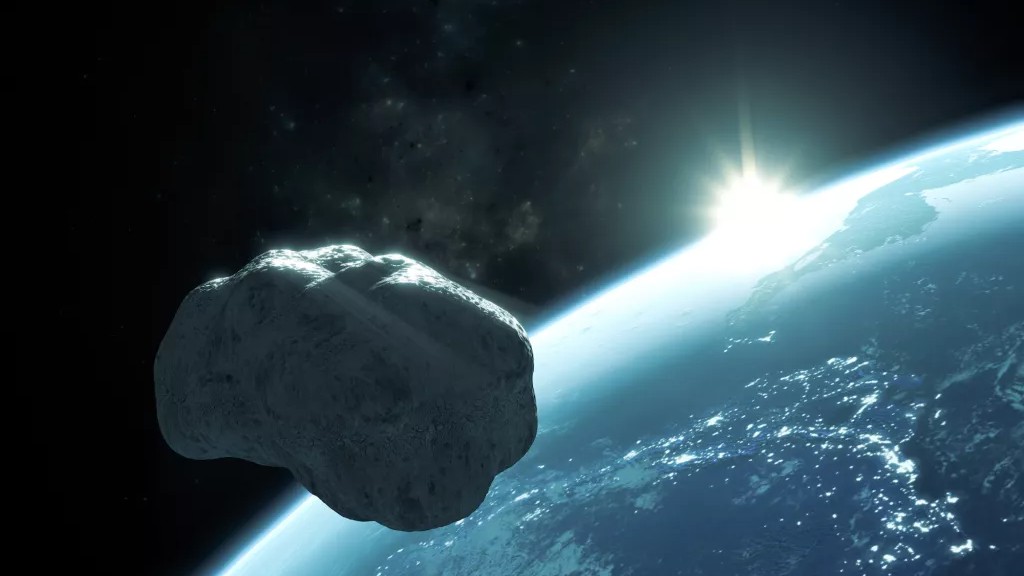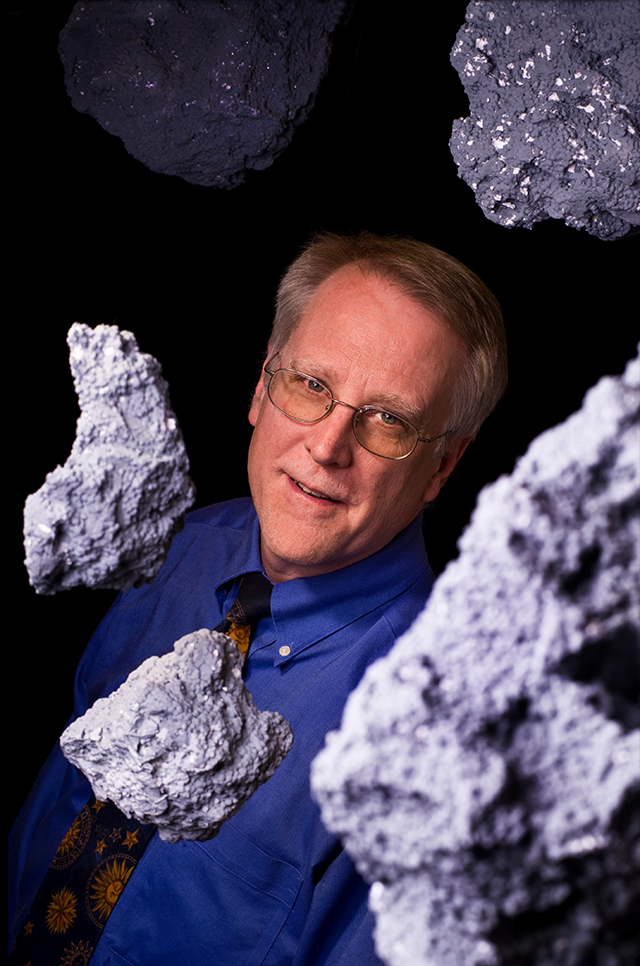'Stepping stone to Mars': Minimoons may help us become an interplanetary species, says MIT astrophysicist Richard Binzel
MIT researcher Richard Binzel has studied near-Earth asteroids for more than five decades and believes they could one day act as "space filling stations."

More than 30,000 asteroids are traveling on paths that bring them close to Earth. Some are giant boulders with the potential to smash into our planet, and others are little rocks known as minimoons moving harmlessly alongside Earth. For half a century, Richard Binzel, an astronomer at Massachusetts Institute of Technology (MIT), has dedicated his career to studying them.
Live Science spoke with Binzel about minimoons and how these little rocks could eventually help humanity take its first trip to Mars.
Related: Undiscovered 'minimoons' may orbit Earth. Could they help us become an interplanetary species?
Q&A with MIT astronomer Richard Binzel
Kiley Price: Tell me how you got interested in minimoons and near-Earth asteroids.
Richard Binzel: Well, I published my first paper on asteroids 50 years ago. At the time I started becoming interested in becoming a scientist, asteroids were largely unexplored and not well recognized for their science potential, and so it seemed a fruitful area to develop an expertise.
KP: What makes minimoons so attractive as stepping stones in interplanetary exploration?
RB: Minimoons are attractive because they're so easy to reach with minimal propulsion. And it provides a fantastic opportunity for testing technologies and evaluating how we might use resources and space to further human exploration.
Sign up for the Live Science daily newsletter now
Get the world’s most fascinating discoveries delivered straight to your inbox.
Related: Earth is about to lose its second moon, forever
KP: Can you explain the "tyranny of the rocket" equation to me?
RB: The tyranny of the rocket equation is that if you need fuel in space, you have to launch that fuel off the Earth. And you need the fuel to launch that fuel. So there's a point of diminishing returns for how much maneuvering you can do in space simply by how much fuel you can lift off the surface of the Earth.
KP: Sounds like a vicious cycle. So when the spacecraft gets heavier, you have to add more fuel?
RB: Yes, exactly. I'll give you an example. One of the missions I [worked on] was the New Horizons mission to Pluto, which was a fly by. The reason it was a flyby is because we wanted to get there in a reasonable lifetime — like nine years — because one: we'd like to be alive when it gets there, and two: spacecraft machines don't work forever. Long story short is that even with the largest rocket available, our spacecraft could not carry enough fuel to stop, slow down and go into orbit once it got there. Like the rocket equation just said, if you're going to get there in a decade, you can't send up enough fuel. You use so much fuel to speed up to get there, you can't launch enough fuel to slow down.

KP: How do we get that fuel while astronauts are already in space?
RB: Minimoons or resources in space break the tyranny of having to launch fuel from the Earth. Effectively, all of the fuel that you can gather from an in-space resource can be applied to get you where you want to go. So the overriding question is: can we establish filling stations in space?
I think that the next technological challenge is to demonstrate in-space resource development. SpaceX and maybe NASA want to start testing in-space refueling where you have your spaceship, but there's another rocket that launches basically a fuel tank and then you refill your spaceship from that.
So that's part of it, how do you transfer fuel from one container to another in space? It's never been done before. But that's a different thing from getting fuel, getting water off the poles of the moon or off of a minimoon or an asteroid. I think it's a wide open, unsolved technological challenge of how to extract resources from an object or body and space.
Editor's note: Water is made of oxygen and hydrogen, the two most essential molecules for rocket propellant. By introducing an electric current to water, scientists can isolate these molecules, then transform them into individual liquefied forms. When these two liquefied materials are combined in a combustion chamber, the hydrogen will act as fuel and the oxygen as an oxidizer—and together they will give the rocket the thrust it needs to blast through space. So water-rich asteroids could be an excellent source of fuel.
KP: What do you think could help us identify more minimoons in space?
RB: Survey, survey, survey — we have to look! The process of identifying any possible hazardous asteroid will, as a natural consequence, find minimoons. Finding what is out there and making sure that there is no pending asteroid hazard in the coming decade or centuries is an adult responsibility that is now in our capability of executing.
The most water-rich asteroids or minimoons are likely to be also rich in carbon, and that makes them very dark, so they do not reflect much sunlight. But that's a benefit to survey telescopes that we can place in orbit, like the NEO Surveyor mission, which will search for asteroids in infrared light, which means they are detected by their heat signature. The darker asteroids are warmer and therefore optimally detected by the in-space telescopes, like the NEO Surveyor mission.
The LSST, or what's called the Vera Rubin telescope now, is on Earth and so it has day-night cycles. I It can't look too close to the sun.
[But] if you're in orbit [like the NEO Surveyor], if you're in space, you can operate 24/7. You can cover more sky and you can also cover sky closer to the sun and so they complement each other. They're just this really excellent one-two punch, one-two complement for finding asteroids that have any potential to come near the Earth. And that's great for the hazards, for identifying possible hazards. And it's ideal for finding accessible space resources.
Related: 'Planet killer' asteroids are hiding in the sun's glare. Can we stop them in time?
KP: How soon do you think it will be for humans to become an interplanetary species?
RB: Certainly not this decade. I think it's a 30-year horizon for leaving the Earth-moon cradle and at least reaching the vicinity of Mars, but not necessarily landing on Mars.
KP: What steps do you think need to happen first, and where do you think minimoons fit into this?
RB: The first step is just long-duration spaceflight, beyond the orbit of the Earth. The next step is long-duration spaceflight that leaves the cradle of the Earth-moon system for periods of months followed by a round trip to Mars. That would probably mimic what was Apollo 8, which was basically a round trip around the moon and back to the Earth.
I think minimoons can fit in that first step of leaving the Earth-moon cradle, where rather than just floating and operating in deep space, in the vast nothingness, there's actually someplace to go and something to do. So they can become a destination or literally a stepping stone to Mars.

Kiley Price is a former Live Science staff writer based in New York City. Her work has appeared in National Geographic, Slate, Mongabay and more. She holds a bachelor's degree from Wake Forest University, where she studied biology and journalism, and has a master's degree from New York University's Science, Health and Environmental Reporting Program.










